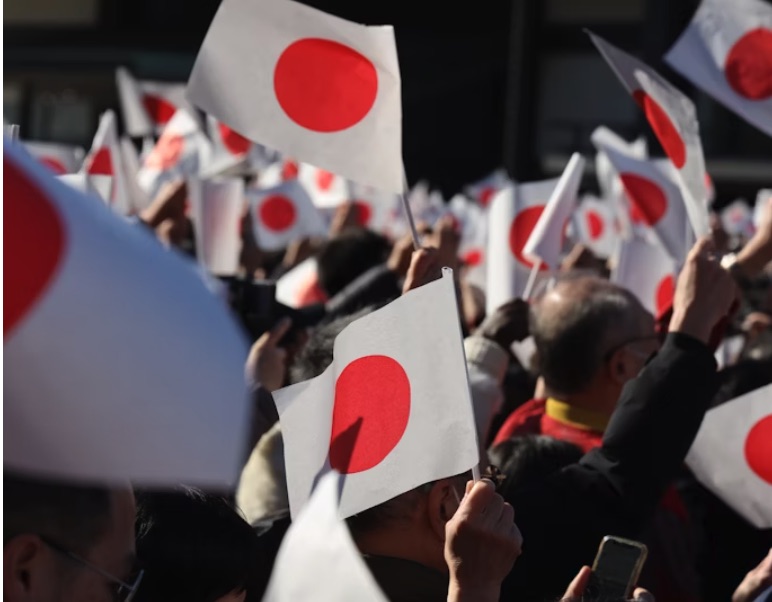Japan has long been considered politically stable, dominated by the Liberal Democratic Party since 1955. Opposition parties were historically fragmented and weak, leaving the LDP unchallenged. In 2025, however, cracks in this dominance became visible. Sanseito, campaigning under the Japanese First banner, surged onto the national stage. In the July 2025 Upper House election, Sanseito won fourteen seats, making it the fourth-largest party in parliament. This development reflects deeper social, cultural, and economic currents rather than an imitation of foreign populism.
Sanseito’s rise is part of a global pattern. Nationalist movements across Europe have thrived on fears over cultural identity and economic migration. Japan demonstrates that demographic decline, economic insecurity, and cultural anxiety can produce right-wing mobilization even in societies long considered homogeneous and politically predictable.
Who Are Japanese First
Sanseito began as a coalition of activists, local politicians, and online personalities, most prominently its leader Sōhei Kamiya. The party platform emphasizes prioritizing Japanese citizens, enforcing stricter immigration controls, preserving traditional values, and revising the constitution to strengthen imperial symbolism. Support comes from urban areas with high youth unemployment and rising living costs and from smaller towns suffering economic stagnation.
Kamiya has styled himself as a Japanese version of Donald Trump, and international media have drawn parallels between his communication style, use of online video, and nationalist messaging and the American former president. This has led some observers outside Japan to attribute Sanseito’s rise to the global influence of Trump-style populism. The reality is more nuanced. While the Trump comparison is rhetorically useful, Japanese First gained traction because domestic political forces failed to address citizens’ concerns about economic stagnation, cultural change, and the perceived erosion of Japanese identity. The movement is homegrown, not imported.
By the 2025 Upper House elections, Sanseito increased itsrepresentation from a single seat in 2022 to fourteen. National polling by the Asahi Shimbun in June 2025 showed fifty-two percent of respondents were sympathetic to the party’s cultural protection platform, while thirty-four percent expressed concerns about extremism.
Electoral Shifts
The October 2024 general election in the Lower House saw the LDP-Komeito coalition lose its majority for the first time since The LDP captured 191 seats, down from 279, while the Constitutional Democratic Party increased its seats from ninety- eight to one hundred forty-eight. Sanseito entered parliament with three Lower House seats, establishing a foothold that expanded in subsequent contests.
The July 2025 Upper House election marked a more pronounced shift. Sanseito’s fourteen seats positioned it behind the CDP and Nippon Ishin no Kai but ahead of other minor parties. Voter turnout was fifty-six percent, with young voters under thirty-five disproportionately supporting Sanseito, signaling a generational shift in political alignment.
Migration and Cultural Identity
Japan’s foreign-born population remains small at around three percent, yet demographic decline and labor shortages have forced the government to accept more foreign workers, especially from Southeast Asia. By 2024, foreign residents numbered 3.77 million. Sanseito framed this influx as a threat to cultural homogeneity, portraying migration as a risk to traditional norms and national identity, echoing the messaging seen in Europe.
Protests over migration have been sporadic but notable. In Tokyo, Osaka, and Nagoya, nationalist demonstrations drew hundreds of participants in 2025. Social media amplified these events, creating
the perception of widespread public concern despite the relatively small numbers.
Parallels with Europe
Sanseito’s messaging mirrors European right-wing populism. Parties in France, Italy, and Germany exploit anxieties over cultural change and economic migration, framing political discourse around identity rather than detailed policy. Japanese First applies the same approach domestically, portraying migration and globalization as existential threats even when actual numbers are modest.
The European comparison shows that Japan is not isolated. Citizens’ anxieties over cultural erosion, economic stagnation, and the perceived failure of mainstream parties create fertile ground for nationalist narratives.
The Role of the Progressive Left and the Myth of Trump
Many commentators in international media claim Trump-style populism inspired Japanese First. In reality, the movement is a reaction to the failures of the Japanese progressive left. While advocating multiculturalism and liberal policies, the left often seemed disconnected from citizens’ concerns about job security, cost of living, and cultural continuity. Its inability to address the anxieties of ordinary people created a vacuum that Sanseito exploited.
Polls in early 2025 showed sixty-three percent of voters felt the left did not understand the challenges facing Japanese households. This domestic dynamic, not foreign influence, drove the rightward shift. Trump may have served as a rhetorical reference, but the rise of Japanese First was caused by local grievances, perceived political negligence, and the fear of cultural erosion.
Economic Anxiety
Economic conditions amplified political volatility. Japan has experienced decades of slow growth. In 2025 rising costs of living, stagnant wages, and inflation on essentials such as rice and utilities heightened public anxiety. Many voters found Sanseito’s cultural nationalist message appealing because it overlapped with economic grievance, framing identity politics as a remedy for material insecurity.
This pattern is similar to Europe, where nationalist parties often present cultural preservation as a solution to economic stress, regardless of policy specifics.
Why It Matters
Sanseito’s growth is more than symbolic. It signals the erosion of Japan’s political consensus and a reconfiguration of the parliamentary landscape. Internationally, shifts in domestic priorities may affect foreign policy, trade, and security stances. Domestically, the rise of Japanese First forces established parties to reconsider their approach to identity, migration, and social policy.
Conclusion
The Japanese First movement demonstrates how political movements emerge when citizens perceive threats to identity and feel ignored by mainstream politics. Its rise is grounded in Japan’s demographic, economic, and cultural context, not foreign models. The failures of the progressive left to address public anxieties, combined with youth engagement through digital media, propelled Sanseito into prominence.
Japan now faces a critical challenge: balancing economic modernization and necessary immigration with the preservation of cultural identity. How the country navigates this will define the next decade of Japanese politics and determine whether Sanseito consolidates its gains or remains a protest wave.

